Mazda CX-5 Service & Repair Manual: Rear Seat Back Removal/Installation
CAUTION:
-
When removing or putting in the rear seat, contact with the surrounding areas of the vehicle could cause scratches and damage. When removing or putting in the rear seat, always use two or more persons to perform the work and be careful not to scratch or damage the rear seat and the surrounding area of the vehicle.
-
When performing the procedure with a rear seat back removed from the vehicle, perform the procedure on a clean cloth so as not to damage or soil the seat.
NOTE:
-
When removing the rear seat back from the vehicle or putting it back in, it can be performed smoothly by removing the headrest.
6:4 Split Type
1. Remove the trunk board..
2. Press the push knob to fold the rear seat back.
3. Remove bolts A.
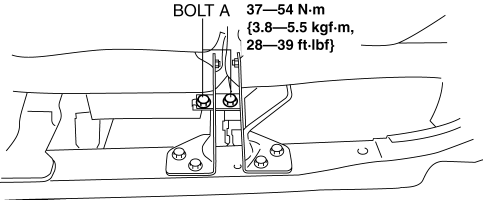
4. Remove the plate in the direction of the arrow (1) shown in the figure.

5. Remove bolts B.
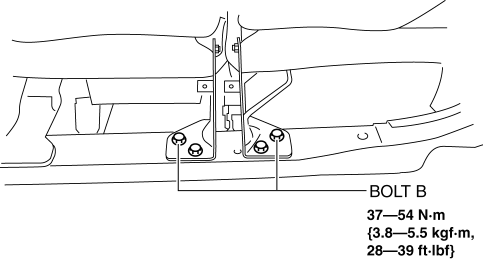
6. Remove bolts C.
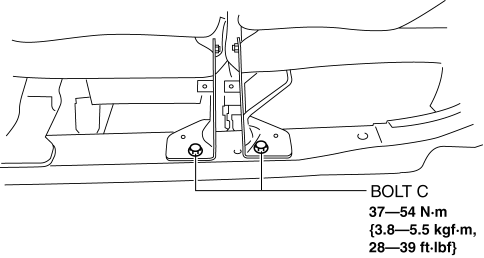
7. Remove bolt D.
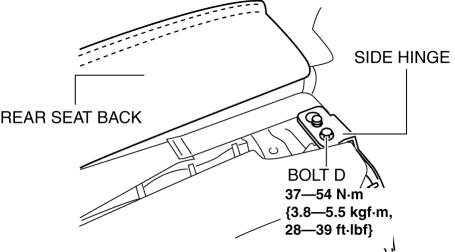
8. After moving the rear seat in the direction of the arrow (2) shown in the figure, remove pin B while moving the side hinge in the direction of the arrow (3).

9. Move the rear hinge in the direction of the arrow (4) shown in the figure and set pin A aside.
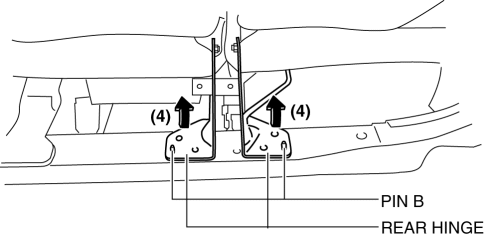
10. Remove the rear seat back.
4:2:4 Split Type
1. Remove the trunk board..
2. Remove the rear seat..
3. Remove bolts A.
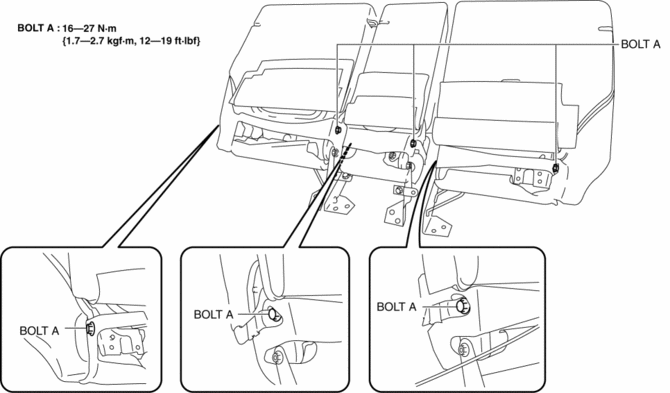
4. Remove the rear seat back.
5. Install in the reverse order of removal.
 Rear Seat Back Frame Removal/Installation
Rear Seat Back Frame Removal/Installation
CAUTION:
When performing the procedure with a rear seat removed from the vehicle,
perform the procedure on a clean cloth so as not to damage or soil the seat.
6:4 Split Type
1. Remov ...
 Rear Seat Back Striker Removal/Installation
Rear Seat Back Striker Removal/Installation
1. Disconnect the negative battery cable..
2. Press the push knob to fold the rear seat back.
3. Remove the following parts:
a. Trunk board.
b. Trunk end trim.
c. Rear scuff plate.
d. Trun ...
Other materials:
Pre Tensioner Seat Belt [Standard Deployment Control System]
Purpose
The pre-tensioner seat belt retracts and tightens the seat belt webbing to
protect the front passengers during a collision.
Function
The pre-tensioner seat belts operate (deploy) based on the operation signal
from the SAS control module to instantly retract and tigh ...
Shift Panel Removal/Installation
ATX
1. Disconnect the negative battery cable..
2. Selector lever to neutral position.
3. Remove the front console box..
4. Take the shaded area shown in the figure, and remove the shift panel in the
direction of the arrow in the order of (1), (2) while detaching clips A, hook B.
5. D ...
Evaporator Temperature Sensor Inspection [Manual Air Conditioner]
NOTE:
Inspect the evaporator temperature sensor when it is installed to the A/C
unit.
1. Set the fan speed at MAX HI.
2. Set the temperature control at MAX COLD.
3. Set the RECIRCULATE mode.
4. Turn the A/C switch off.
5. Close all doors and windows.
6. Wait for 5 min.
7 ...
